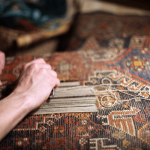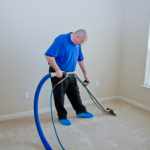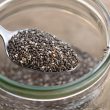Have you ever looked closely at the hinges on your shower door or old windows and noticed a dark, slimy substance? What about spots of fuzzy growth on the wall or ceiling after water damage? Find about the types of harmful and harmless mold.
What you’re looking at is mold, a variety of fungus that can be found anywhere cool, dark, and damp. In small amounts, it’s often harmless mold. If it’s allowed to spread, though, it can do serious damage to your home—and your health.
Did you know that there are different types of mold, some of which are more dangerous than others? To learn about some of the most common types of house mold and what to do about them, keep reading through this simple guide.
Classifications of Mold Types
Before we get into how to identify mold in your home, let’s break down the main categories it falls into.
Some kinds of mold aren’t dangerous to humans. While they won’t make you sick, these harmless mold varieties can still damage the surfaces they grow on. Thankfully, homeowners can often use DIY removal strategies to get rid of them.
Harmful molds are grouped into three classifications:
- Allergenic: these varieties can trigger allergic reactions or asthma attacks in sensitive individuals
- Pathogenic: these varieties can cause or worsen existing illnesses
- Toxigenic: these varieties produce dangerous toxins that can cause serious and potentially fatal harm
Some molds can fall under multiple classifications depending on the environment and your sensitivity to them.
Now that you’re familiar with the categories of molds, it’s time to look at a few different species from each group that you could find in your home.
Alternaria
Classification: Allergenic
Identification: Velvety or soft texture, dark green to brown coloration
Common Locations: Damp areas like bathtubs, showers, sinks, or near areas of water damage from persistent leaks
Alternaria is the most common allergenic mold in the United States. It grows year-round, but some research shows it’s most prevalent during the autumn months. It isn’t dangerous, but it can cause upper-respiratory irritation and trigger asthma attacks in sensitive people.
The biggest concern regarding Alternaria is how fast it spreads. You can clean it yourself if you catch the problem early on, but call a professional if there are more than a few inches of surface growth.
Penicillium
Classification: Allergenic
Identification: Bright blue-green color with areas of gray, texture is fuzzy and/or velvety
Common Locations: Areas with water damage including soft and upholstered surfaces
Penicillium mold is the variety from which the first antibiotic, penicillin, was developed. One strain, Penicillium roqueforti, makes the “blue” in blue cheese.
Sadly, the varieties that grow in your home won’t help you make cheese or medicine. Breathing in the airborne spores can cause severe allergic reactions in some people, while others can develop chronic sinus infections and other complications.
Like Alternaria, you can remove small spots of Penicillium on your own, but leave larger areas to the pros. Any upholstered furniture with significant Penicillium growth should be thrown out.
Aspergillus
Classification: Allergenic
Identification: Forms thick sheets, color isn’t a reliable indicator
Common Locations: Any cool, dark, damp areas in the home
Because there are almost 200 species of aspergillus, you can’t use color to identify it. Instead, look for the thick sheets it forms on surfaces.
Aspergillus is generally harmless mold to mildly allergenic. However, a few less common varieties can produce carcinogenic aflatoxins, so it’s best to call a mold removal specialist just in case.
Aureobasidium
Classification: Allergenic and Pathogenic
Identification: New mold starts as pink, but changes to brown as it ages
Common Locations: Behind wallpaper and wall paneling, on wooden or painted walls and furniture
The danger of Aureobasidium isn’t breathing it in, it’s touching it with bare skin. Skin contact can lead to dermatitis or eye, nail, and skin infections. Never touch it without gloves, and call a professional if there are more than a few inches of growth.
Cladosporium
Classification: Allergenic
Identification: Soft, velvety, or suede-like, olivey-green to brown color
Common Locations: Upholstered furniture and carpets, cupboards, under rugs and floor coverings
This mold type can cause serious allergic reactions, sinus infections, and lung infections as well as skin rashes. Never handle it on your own and tear out any contaminated carpets to avoid illness.
Mucor
Classification: Allergenic and Pathogenic
Identification: White to gray coloration, grows in thick, fuzzy patches and clusters
Common Locations: Air conditioning and HVAC units, damp carpets, air ducts and vents
Because Mucor likes to grow in areas that disperse air around the house, it can cause serious allergic and asthmatic reactions. Some people with mold sensitivity may also experience flu-like symptoms.
Long-term exposure to Mucor can even mucormycosis, a fungal infection that can spread to the sinuses and lungs. In some cases, it can even cause brain damage.
Mucor is another mold variety that you should never handle on your own. If you notice it growing, turn off your air circulation to prevent further spread. Call a professional to take care of the problem as they have the necessary respiratory protection to keep themselves safe.
Stachybotrys
Classification: Toxigenic
Identification: Wet and slimy texture, dark green to black color
Common Locations: Constantly damp natural materials like wood, cardboard, paper, hay, or wicker
If you’ve heard someone refer to “toxic black mold”, they were talking about Stachybotrys. This species has dangerous health effects including mood disorders, respiratory difficulty, and even neurological problems in developing children.
Never try to remove Stachybotrys on your own—always call a mold removal service to do it for you.
Which Types of Mold Are Growing in Your Home?
We hope the answer to that question is “none”, but if you’re like the average homeowner, there are a couple of types of mold lurking somewhere in your house. Using this guide to identify them can help you decide whether to tackle the problem on your own or call in an expert for help.
Looking for more information on how to take care of your home? Check out the rest of our site for more helpful articles like this one.
.

















